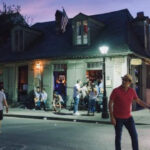Nestled in the heart of Santa Rosa, California, the W 9th Street heronry stands as a remarkable example of urban wildlife thriving in an unexpected location. This vibrant nesting site, a focal point for bird enthusiasts and conservationists alike, provides a crucial habitat for a variety of heron and egret species. Every year, these magnificent birds choose the towering eucalyptus trees lining West 9th Street as their breeding ground, creating a spectacle of nature within a residential neighborhood.
Each spring and summer, the trees along W 9th Street come alive with the bustling activity of nesting herons and egrets. The site hosts a diverse avian community, primarily featuring Black-crowned Night Herons, Snowy Egrets, Great Egrets, and Cattle Egrets. While annual nest counts fluctuate, the W 9th Street heronry consistently supports a significant population of these birds, making it the largest nesting site of its kind in Sonoma County. For instance, in 2016, despite a slight decrease in overall nest numbers compared to the previous year, the site still accommodated hundreds of nests, including a substantial number of Black-crowned Night Heron, Great Egret, and Snowy Egret families. Cattle Egrets also maintained a notable presence, further contributing to the heronry’s rich biodiversity.
The presence of such a large heronry in an urban setting presents unique challenges and necessitates dedicated conservation efforts. Organizations like Bird Rescue of Sonoma County play a vital role in monitoring the W 9th Street site and rescuing fallen fledglings. These dedicated volunteers spend countless hours ensuring the safety of the young birds, often transporting those needing specialized care to International Bird Rescue (IBR) in Cordelia. IBR’s expert rehabilitators then nurture the herons and egrets back to health, preparing them for release back into their natural habitat. The culmination of these rescue efforts is the careful release of banded, rehabilitated birds back into the wild, often in the nearby Laguna de Santa Rosa area, providing them a second chance at life.
Madrone Audubon Society actively supports these rescue initiatives through an ongoing support project at W 9th Street. Each nesting season, Madrone Audubon volunteers set up a protected area beneath the primary nesting trees, utilizing padded straw to cushion falls and create a safe zone for birds awaiting rescue. This area is diligently maintained throughout the nesting season, ensuring a clean and secure environment. Furthermore, Madrone Audubon installs Migratory Bird Treaty Act signage to raise awareness and collaborates closely with community members and rescue teams to facilitate communication and support. The City of Santa Rosa also demonstrates its commitment to conservation at the W 9th Street heronry. Responding to concerns raised by rescuers and Madrone Audubon, the city installed a speed limit tracking sign on W 9th Street. This measure helps to mitigate the danger of speeding vehicles, which pose a significant threat to both young and adult birds navigating the urban environment. This collaboration highlights the community-wide effort required to protect this unique urban wildlife haven.
The W 9th Street heronry is more than just a nesting site; it’s a local landmark and an educational resource. Recognizing its significance, Madrone Audubon Society features the heronry prominently during its annual Bird Festival, held each May at nearby Lincoln Elementary School, located on W 9th Street. This festival serves as a day-long celebration of environmental and wildlife appreciation, particularly for the students of Lincoln Elementary, fostering a sense of connection with nature right in their neighborhood. The continued success of the W 9th Street heronry is a testament to the collaborative spirit of various organizations and individuals. Madrone Audubon Society expresses its gratitude to the City of Santa Rosa, Audubon Canyon Ranch, Bird Rescue of Sonoma County, International Bird Rescue, and the supportive residents of West 9th Street. The tolerance and often enthusiastic support of the local community are crucial to the continued well-being of this urban nesting phenomenon, which attracts visitors, birdwatchers, and photographers to this unique corner of Santa Rosa.
For those wishing to witness the natural wonder of the W 9th Street heronry firsthand, responsible viewing is essential. To minimize stress on the nesting birds, it is recommended to park at least a block away from the nesting site and observe from the sidewalks on either side of the street. Staying out of the median and being mindful of nests in tall trees on private properties surrounding W 9th Street is also crucial. Maintaining a quiet tone of voice while viewing will further contribute to a peaceful environment for the birds as they raise their young. By adhering to these simple guidelines, visitors can enjoy the incredible spectacle of the W 9th Street heronry while ensuring the well-being of its avian residents.
The W 9th Street heronry stands as a remarkable success story of urban conservation and a reminder of the importance of coexisting with wildlife in our cities. It offers a valuable opportunity to observe nature up close and appreciate the resilience of these magnificent birds in the heart of Santa Rosa.

